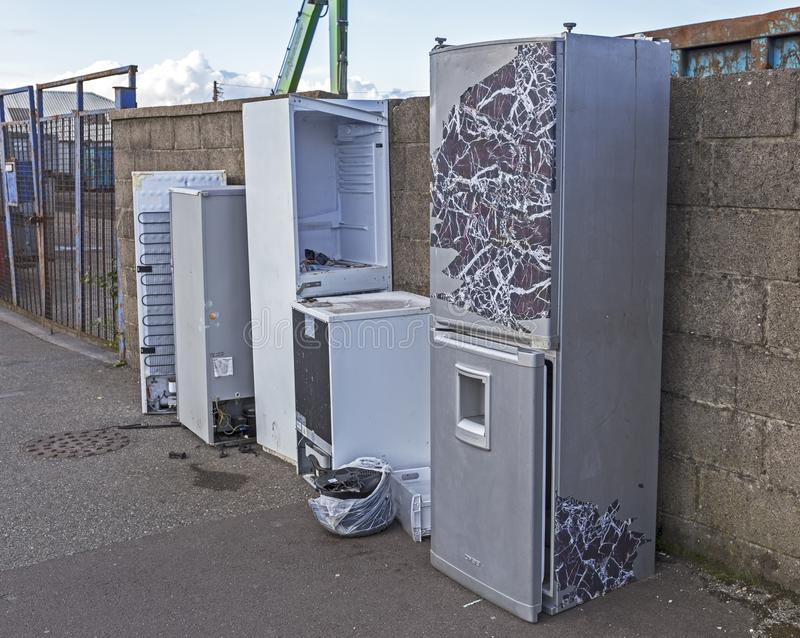Refrigerators are one of the hardest items to recycle. They’re filled with polluting gasses that can leak out in the process. Scientists say controlling fridge gasses is one of the best ways to fight the climate crisis as these are the gasses that can warm the earth thousands of times more than carbon dioxide. But one company in Guatemala is fighting to keep this from happening.
“I did not know what to do with the gas. What I did know was that I couldn’t release it. I had to learn by searching, researching, reading.” Says Angel Toledo, founder of Ecologia Total, a recycling company based in Guatemala City. It took him about a year after founding his recycling company to figure out what to do with the refrigerator gas. Over 4000 refrigerators were piled up at Ecologia Total. Today, Angel and his team manage around 400 industrial refrigerators every month, a lot of them coming from a partnership with Pepsi.
First, they check if there’s still gas left in the fridge. “We make the connection to know if there is pressure in the system. If there is no pressure, which is measured by these gauges, then it means that we have no refrigerants”, tells Angel. About a third of these gasses are released during use. If there is any gas left, they attach tubes and collect them. They puncture the pipe, open the pressure gauge to establish the pressure, check whether or not it has refrigerant, and then start with the extraction.

Each refrigerator contains around half a pound of gas. It may not sound like a lot but 8 or 10 ounces of the gas is lethal for the environment. Extracting these gasses doesn’t make Angel any money. That’s where recycling the other parts of the fridge comes in. These recovered metals like iron, aluminium, and copper, are taken out while dismantling each unit of the fridge, help pay the bills for them. Workers also strip wires from the fridge to sell the metals inside. Only 5% of the refrigerators recycled here contain first-generation gasses, the oldest and most harmful ones, the chlorofluorocarbons (CFCs), terrible for the ozone layer and the upper atmosphere. After the analysis of the extracted gasses, the ozone thinning ones go into 4000-pound storage tanks. After enough of them are collected, Angel ships them out for destruction.

If the fridge has a gas that doesn’t affect the ozone layer, Angel might reuse it for another fridge. But even though they are easier on the ozone layer, they still add to climate change, and some countries have already started phasing them out in 2016.
Getting the gasses to the destruction facilities is challenging too. The materials are hazardous waste by most nations around the world, so taking them across the borders means going through several legal restrictions. But Angle says knowing that his work helps the environment keeps him going. “I say it’s like the ecstasy of this job. There is already scientific evidence that the ozone layer has indeed been recovering. The benefit will then be transferred to the people who inhabit this climate”, he added.
Tazeen Ansari

